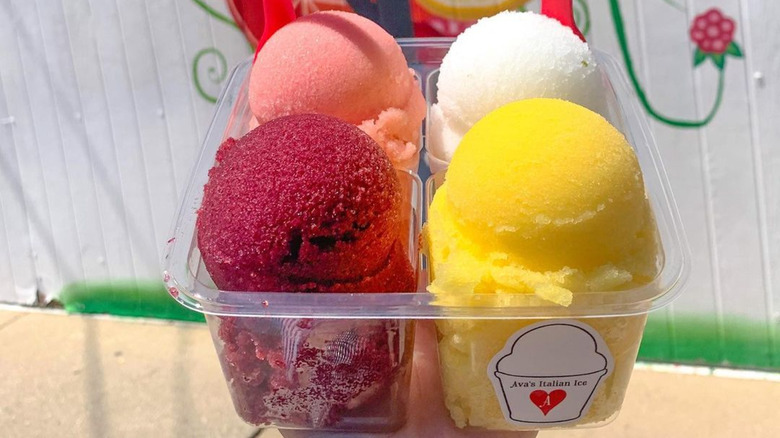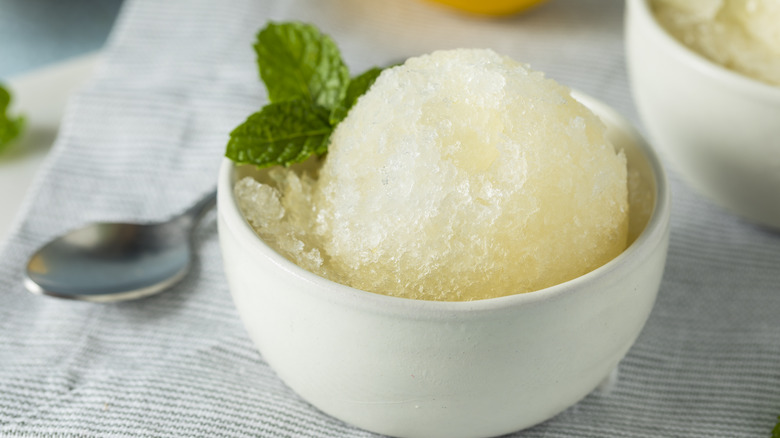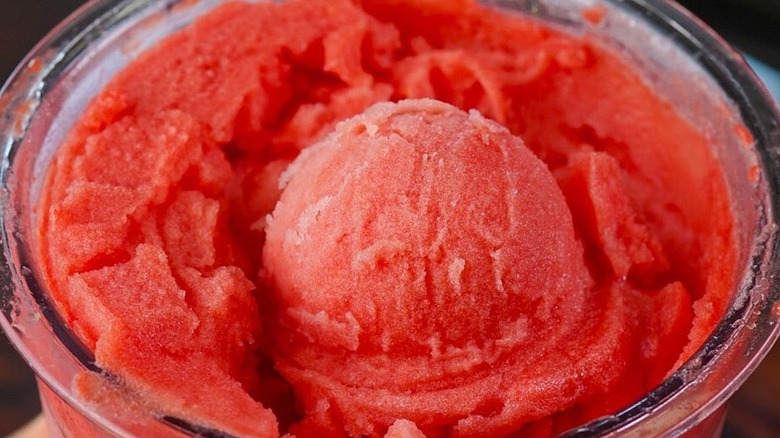What Is Italian Ice, Anyway?
If you grew up in New Jersey or Pennsylvania, you probably spent your summers sucking down paper cups of Italian ice, which is called water ice (pronounced "wooder ice") in the greater Philadelphia area. Yes, ice is already made from water. Don't question the name. And yes, some consider the two desserts separate because water ice isn't always churned the way Italian ice is, but we're not taking sides here.
Popularized by seasonal chains like Repicci's Real Italian and Rita's Italian Ice, the refreshing summer treat is made from frozen fruit juice or flavored water and is whipped to achieve a fine texture that melts in your mouth. It's in the same family as desserts like granita, slushies, or shaved ice (aka Hawaiian ice), but is set apart by its creamy texture with no sharp chunks of ice. In fact, the texture is similar to that of sherbet, but unlike sherbet, it is made without dairy. Though you may be able to find several flavors of "cream ice," which is effectively sherbet. In a nutshell, it's a variation of sorbet — though it came to the U.S. from Italian granita, rather than French sorbet.
Is Italian ice really Italian?
The roots of Italian ice lie in Sicily — where iced treats were traditionally popular thanks to the availability of fresh snow year-round from the nearby Mount Etna. The volcanic ash from the volcano even helped to preserve the freshness of the snow — though you have to wonder if it affected the taste. Sicily's famous lemons were brought in by the Arabs, and the Sicilians got the idea to add sugar and lemon juice to their snow, creating the first granita, likely around the mid-10th century.
Italian ice, however, was invented not in Italy, as the name would suggest, but in the city of Elizabeth, New Jersey. In 1915, an Italian immigrant by the name of Caterina Di Cosmo decided to try and recreate her hometown treat of granita — but ended up accidentally creating something much smoother and creamier. The accidental inventor opened a shop, called DiCosmo's, and began selling her "Italian ice" to locals. The store is still in operation, and Di Cosmo's descendants still make Italian ice in the same way she made it a century ago, using the same equipment, and doing everything by hand with local, seasonal ingredients.
Italian ice today
But the recipe for Italian ice has since expanded far beyond Elizabeth, spawning Italian ice stands all over the Northeast — and even a handful out west. In addition to popular chains like Rita's Italian Ice, Repicci's, or Jeremiah's if you're down south, you can find likely pick some up during your next grocery trip. That's thanks to the ubiquitous grocery store Italian ice brand, Luigi's, which sells individual plastic cups of Italian ice at the grocery store. But this rock-hard frozen aisle Italian ice simply can't match up to the fresh stuff.
Popular flavors of Italian ice include lemon, mango, blue raspberry, and cherry, but if you find yourself at Rita's, it's worth at least sampling something like their Swedish Fish flavor, which tastes remarkably like the candy. Though of course lemon is the classic flavor, the original from DiCosmo's, and it's hard to beat in the summer heat as it will cool you down more than a glass of lemonade.
You can eat Italian ice on its own or try it blended with soft-serve custard or gelato. You can also spike it with booze for a no-fuss frozen cocktail — a MargaRita's if you will. Most Italian ice stands open in late spring and close in the fall, so the seasonality of the frozen treat is circumstantially enforced.



